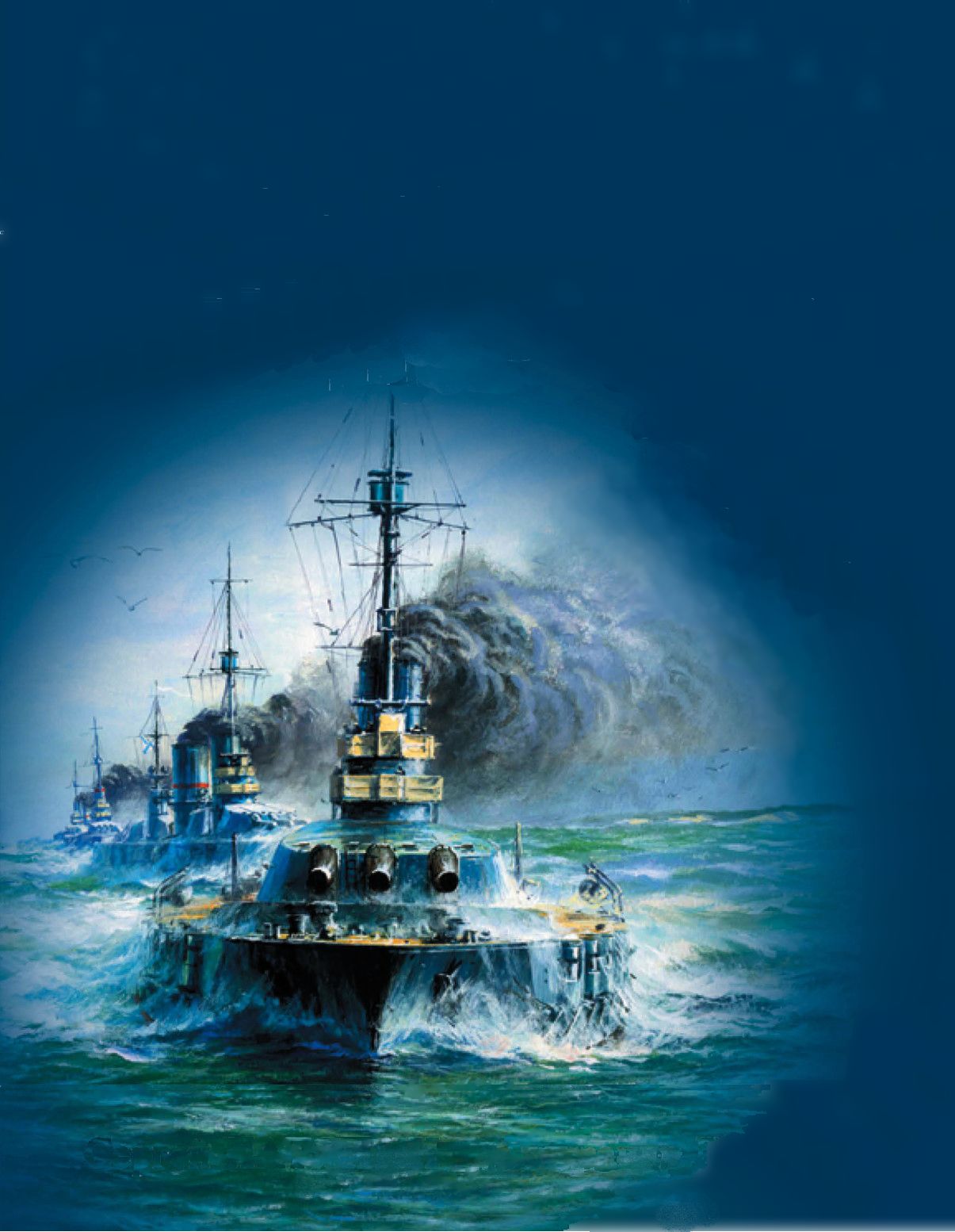
Russian battleship laid down at the Admiralty Yard in June 1909 and launched in October 1911 as part of the naval building program of 1909, which included three other dreadnought battleships, Petropavlovsk, Poltava, and Sevastopol. These were the first dreadnoughts built for the Russian navy. Gangut was 23,000 tons, armed with 12 x 12-inch guns arranged in four triple turrets, and built on Italian design of the Dante Alighieri with Russian modifications. The result was a dreadnought of great broadside firepower.
Based on experience gained from the defeat of the Russo-Japanese War in 1904-1905, Gangut had armor all over the hull at any point above the waterline. In addition, she also had no scuttles on the sides to add strength to the hull for work in the Baltic ice.
The Russian battleship fleet comprised only two classes of dreadnoughts. The first, the Ganguts (Gangut, Sevastopol, Petropavlovsk, and Poltava—all completed in 1914), had a poor reputation and saw very limited service during World War I. All four cost far more than the original budgets, and they were so delayed by design faults and shipyard blunders that they were obsolete when finally launched. The engines and turbines had to be supplied by foreign firms, although the guns were of excellent Russian manufacture. They were, in fact, something of a combination battleship/battle cruiser and were sometimes referred to as Baltic dreadnoughts, with armament heavier than one-third of contemporary German and Royal Navy capital ships, but primarily designed for close-in waters, such as the Baltic Sea and Black Sea. These four dreadnoughts epitomized the turmoil of the late czarist and early Soviet periods.
During World War I, on 19 October 1915, Gangut’s sailors mutinied by refusing to obey orders and physically attacking some of her officers. The complaints centered around the poor quality of the food. The sailors also expressed suspicion of officers with Germanic surnames and demanded that these be sent ashore. The following day the more radical sailors circulated a petition throughout the ship calling for the crew to finish the job of mutiny. As word of the mutiny spread, the commander of the Baltic Fleet ordered that submarines and torpedo boats surround the Gangut and sink her, along with any other vessel that refused to accept proper authority.
On 21 October authorities suppressed the mutiny and arrested 95 sailors. Out of 34 brought to trial, 26 received banishment to hard labor as their sentence. As a consequence of the mutiny, Russian plans for a naval sortie late in 1915 had to be scratched and Russian minelaying operations were delayed by about a week in November 1915. However, a little later the Gangut, and her sister ship the Petropavlovsk, did leave the Gulf of Finland and operated as far south as Gotland as part of a screening force for minelaying operations. The ship did not encounter the Germans, and it achieved nothing tactically.
The mutiny on the Gangut encouraged Russian revolutionaries in their belief that antiwar sentiment and general dissatisfaction could be used to ignite rebellion in the tsarist armed forces. In August 1917 the Bolsheviks managed to gain revolutionary influence over the crew and exercised effective control of the First Battleship Brigade.
The Gangut was renamed the Oktiabrskaia Revoliutsia in May 1925. Soviet authorities commenced modernization work on her in 1926. This was completed in 1938, and the battleship then joined the Soviet Baltic fleet. She served as a floating battery against the Germans in the siege of Leningrad during World War II. In 1956 Gangut ended service with the Baltic Fleet. She was broken up in 1959.
General characteristics
Type: Battleship
Displacement: 24,800 t (24,400 long tons)
Length: 181.2 m (594 ft 6 in)
Beam: 26.9 m (88 ft 3 in)
Draft: 8.99 m (29 ft 6 in)
Installed power:
25 Yarrow boilers
52,000 shp (39,000 kW) (on trials)
Propulsion: 4 shafts, 4 steam turbines
Speed: 24.1 knots (44.6 km/h; 27.7 mph) (on trials)
Range: 3,200 nmi (5,900 km; 3,700 mi) at 10 knots (19 km/h; 12 mph)
Complement: 1,149
Armament:
4 × triple 12 in (305 mm) guns
16 × single 4.7 in (120 mm) guns
1 × single 3 in (76 mm) AA gun
4 × 17.7 in (450 mm) torpedo tubes
Armor:
Waterline belt: 125–225 mm (4.9–8.9 in)
Deck: 12–50 mm (0.5–2.0 in)
Turrets: 76–203 mm (3.0–8.0 in)
Barbettes: 75–150 mm (3.0–5.9 in)
Conning tower: 100–254 mm (3.9–10.0 in)